 At the end of the growing season, grape leaves are changing color. They turn from green to shades of yellow (white varietals) or red (red varietals) – see the Magnesium deficiency symptoms below (Figures 1 & 2). This is the result of the leaf senescence process: Chlorophyll is broken down, and nitrogen and other mobile nutrients are being removed from the leaf to storage tissues in the woody part of the vines. This process starts at the leaf margins and progresses to the basal part of the leaf, with the major vascular bundles being the last parts to experience cell death. The last step is leaf abscission. This degenerative process is controlled by the plant and is desirable. It occurs across the whole vineyard at the same time, though its start, progress, and end vary slightly even within a vineyard due to soil moisture, nutritional status, and microclimate.
At the end of the growing season, grape leaves are changing color. They turn from green to shades of yellow (white varietals) or red (red varietals) – see the Magnesium deficiency symptoms below (Figures 1 & 2). This is the result of the leaf senescence process: Chlorophyll is broken down, and nitrogen and other mobile nutrients are being removed from the leaf to storage tissues in the woody part of the vines. This process starts at the leaf margins and progresses to the basal part of the leaf, with the major vascular bundles being the last parts to experience cell death. The last step is leaf abscission. This degenerative process is controlled by the plant and is desirable. It occurs across the whole vineyard at the same time, though its start, progress, and end vary slightly even within a vineyard due to soil moisture, nutritional status, and microclimate.

Figure 1 – Magnesium (Mg) Deficiency – white varietal
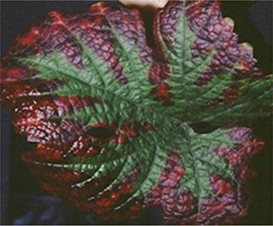
Figure 2 – Magnesium (Mg) Deficiency – red varietal
If we see leaf discoloration from solid green to other hues and colors at any time other than fall, it is a sign that the leaves are under a severe stress that is not a desirable part of the growth process. In many cases, a severe nutrient deficiency is the cause for the leaf discoloration. Depending on the nutrient in question, this discoloration can have a characteristic shape and color indicative of the deficient nutrient.
Here are some examples:
In addition to the discoloration and its pattern on the leaf, the position on the vine may help narrow down the culprit. Potassium (Figures 3 & 4) and nitrogen (Figure 5) deficiencies tend to show on the older and lower leaves; both nutrients are highly mobile in the vine and can easily relocated from older tissues to strong sinks like growing points or berries. Phosphorus (Figure 6) falls into this category, too.

Figure 3 – Potassium (K) Deficiency

Figure 4 – Potassium (K) Deficiency

Figure 5 – Nitrogen (N) Deficiency

Figure 6 – Phosphorous (P) Deficiency
Iron is poorly mobile in the plant, and the leaf yellowing symptoms of a developing iron deficiency (Figure 7) typically appear on the younger and upper areas of the vine.

Figure 7 – Iron (Fe) Deficiency
Zinc deficiency (Figure 8) often expresses with a light green and somewhat blotchy leaf color, small leaves, and stunted internodes.
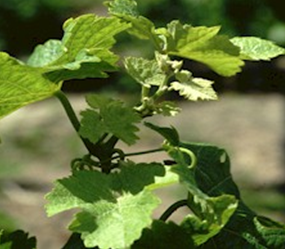
Figure 8 – Zinc (Zn) Deficiency
If you look at the above illustrations in an unbiased way and have read the text carefully, you realize that the visual diagnosis of nutrient deficiencies is not a very reliable method. The potassium symptoms in Figure 3 are very similar to the magnesium symptoms in Figure 2. Nitrogen and iron deficiency look quite similar, too. The location difference of these symptoms on the vine is often not as clear cut as we would like.
With this in mind, take a look at the following figures.
Figures 9 through 13 are not nutrient deficiencies, but damage symptoms from diseases and insects. Figure 9 is Leafroll disease, Figure 10 is Red blotch, Figures 11 and 12 show hopper damage, and Figure 13 is Pierce’s disease. I am sure that many readers will recognize this, but be honest: Unless you are intimately familiar with the vineyard and the varietal/rootstock combination planted there, it is difficult to make a confident judgement about the cause of these symptom just from looking at them. Visual symptoms give us a clue that something is off; they do not allow us to make a definitive diagnosis of a nutrient problem. The next step should be to look deeper: Are insect pests present? What nutrient program has been applied? What soil type is the vineyard on? Unless we find clear evidence of an insect pest that caused the symptoms, only a tissue analysis can pin down if and what nutrient deficiency is present. The same goes for diseases.
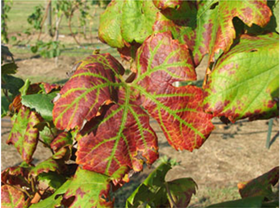
Figure 9 – leafroll virus disease symptoms

Figure 10 – red blotch virus disease symptoms
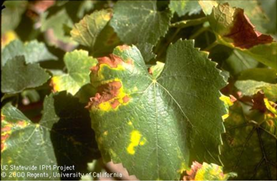
Figure 11 – hopper damage
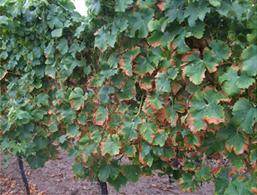
Figure 12 – hopper damage
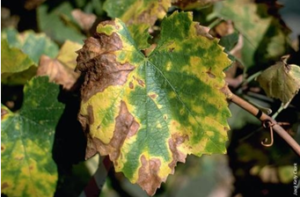
Figure 13 – Pierce’s disease symptoms
Lastly, in good vineyard fertility management, we never want to see nutrient deficiency symptoms. Losses in yield and quality are significant long before symptoms become visible.
Dr. Sebastian Braum is the Director of Technical Services – Soil, Irrigation, and Plant Nutrients for The Tremont Group.
Have something interesting to say? Consider writing a guest blog article!
To subscribe to the Coffee Shop Blog, send an email to stephanie@lodiwine.com with the subject “blog subscribe.”
To join the Lodi Growers email list, send an email to stephanie@lodiwine.com with the subject “grower email subscribe” or click on “join our email list” to the right.
To receive Lodi Grower news and event promotions by mail, send your contact information to stephanie@lodiwine.com or call 209.367.4727.
For more information on the wines of Lodi, visit the Lodi Winegrape Commission’s consumer website, lodiwine.com.

